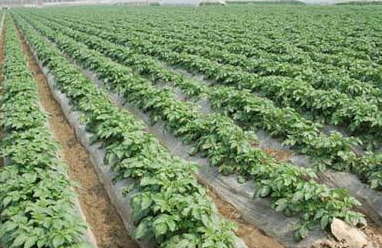There are ways to rationally rotate the potato
Plants grow in the soil and are closely related to the soil. The continuous cropping obstacle is mainly caused by the imbalance of soil nutrients caused by continuous planting of the same crop, the abnormality of soil microflora and the accumulation of self-toxic substances secreted by plants or microorganisms in the soil and affecting crop growth.
In recent years, due to the increasing demand for potatoes, the economic benefits of planting potatoes are good. Therefore, in many areas, potatoes have become the main economic crops, but potatoes are very sensitive to continuous cropping, which is a crop that avoids continuous cropping, leading to continuous cropping in the world. The production area is very common.
The reasons for the continuous obstacles are:
Soil nutrient imbalance
On the one hand, continuous cropping will lead to the lack of certain nutrients. If these nutrients are not replenished in time, it will affect the healthy growth of crops, which will lead to continuous cropping obstacles; while the unwanted elements of other crops will accumulate excessively in the soil. Secondary salinization and the like can also lead to continuous cropping obstacles. The content of available nitrogen, phosphorus and potassium in the soil decreased after continuous cropping of potato. After 4 years of continuous cropping, the content of total nitrogen, total phosphorus and total salt in the soil decreased compared with soil.
2. Soil microbial flora abnormalities
The microorganisms in the soil can be generally divided into three categories: beneficial bacteria, neutral bacteria and harmful bacteria according to their effects on plant growth. In the case of normal rotation planting, the number and proportion of the above three types of microorganisms in the soil are in a dynamic equilibrium. Although harmful microorganisms may exist, they will not become dominant populations in the soil and therefore will not affect the normal growth of crops. After crop continuous cropping, due to the existence of suitable host and suitable growth environment, some pathogenic bacteria will rapidly multiply and eventually become the dominant group in the soil, which will affect the growth of crops, trigger soil-borne diseases, and cause continuous cropping obstacles.
With the extension of continuous cropping time, the number of Fusarium pathogens of dry rot pathogen in potato root soil increased. After continuous cropping, the number of cellulolytic bacteria and nitrogen-fixing bacteria beneficial to potato growth in soil decreased compared with soil. After the potato, the number of soil-borne pathogenic fungi Fusarium oxysporum and Fusarium solani increased in the soil, while the number of antagonistic bacterium Chaetomium decreased.
3. Accumulation of self-toxic substances
Plants rely mainly on roots to ingest nutrients from the soil, and changes in soil chemistry and micro-ecological environment have a great impact on the normal growth of plants. Among the autotoxic substances secreted by plants, root exudates have the greatest influence on plant growth. On the one hand, root exudates can directly affect the normal growth of crops by changing the chemical environment of the roots of the crops; on the other hand, they can indirectly affect the healthy growth of plants by affecting the microflora of the root soil.

The control measures are as follows:
1. Change the cropping system, rational rotation, and intercropping. Through rotation, the number of pathogens and the number of pests and diseases in the soil can be significantly reduced.
2. The plant residues remaining in the field are burnt intensively, and then the ash is returned to the field, which can effectively kill the eggs, parasites and the like remaining on the straw, and can effectively provide potash.
3. After the emergence of the potato, each plant is filled with 1000 times of avermectin 100 ml or mixed with avermectin, which can effectively prevent the occurrence of soil-borne diseases and insect pests.
4. Qualitative and quantitative determination of nutrient deficiency in soil before sowing, and develop a reasonable fertilization system, apply organic fertilizer, and improve soil structure.
5. Planting potato varieties resistant to continuous cropping (such as resistance to diseases and insect pests, self-toxicity, salt tolerance, etc.).
Dna Sample Processing Instrument,Dna Extractor Clinical Analytical Scientific Instrument,Sample Processing System For Dna,Dna Automated Sample Processing System
Nanjing Superyears Gene Technology Co., Ltd. , https://www.superyearsglobal.com